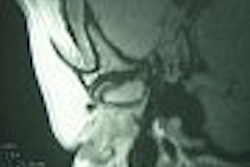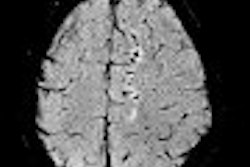Functional MRI is one of the most exciting areas of medical imaging -- an imaging technique that provides a window into the intricate relationship between higher consciousness and the biochemical processes that govern mind and body. But is it exciting enough to base an entire company on it?
The folks at Neurognostics are doing just that. The Milwaukee start-up is developing a range of products aimed at taking fMRI out of the research lab and into routine clinical use by making fMRI techniques more standardized and easier to use, according to Douglas Tucker, a former executive with Agfa HealthCare who joined the company in April 2004.
"We think fMRI is a wonderfully powerful tool, but there needs to be a focus on making it a clinical application," Tucker said. "A lot of that involves standardization, defining certain tasks, using sequences, collecting data, and having a database that you can compare it to to define conclusions and results."
Functional MRI has its roots in research from three academic sites published in 1992, Tucker said. The technique measures brain function by assessing changes in the ratios of oxygenated to deoxygenated hemoglobin in cerebral blood flow. Such ratios can change in areas of the brain that are activated when performing specific tasks under fMRI scanning, such as remembering a numerical sequence or watching a television commercial.
In addition to basic research on human cognitive function, fMRI has demonstrated its utility in assessing central nervous system (CNS) disorders, such as Alzheimer's, Parkinson's, attention-deficit/hyperactivity disorder (ADHD), and multiple sclerosis. Researchers using fMRI are able to determine the areas of the brain that are affected by particular conditions, which can aid in a diagnosis or help track the effectiveness of therapeutic interventions.
The problem with fMRI is that most of the work to date on the technique has been research-oriented, according to Tucker. Unless particularly well-versed in fMRI, a clinician seeking to use the technology to make a diagnosis would have to resort to a literature search to help interpret imaging findings.
Building a knowledge base
Neurognostics hopes to address this shortcoming by developing a suite of products based on research conducted by Stephen Rao, Ph.D., a professor of neurology at the Medical College of Wisconsin, also in Milwaukee. Rao was one of the early fMRI pioneers, and over the years has amassed a sizable database that reflects his work in using fMRI to map how different areas of the brain are affected by various CNS disorders.
"The long-term product is a database of knowledge," Tucker said. "If you perform this task in the scanner, then this is what a normal patient would look like. If there is a disorder like Parkinson's disease, it would look like this."
Neurognostics is developing a set of what the company calls biomarkers based on Rao's research. A biomarker consists of a specific task to be performed by a subject, such as remembering a numerical sequence, and the hemodynamic response produced by that task, such as activity in the left inferior frontal gyrus of a normal patient. By using Neurognostics' tool, users would be able to benefit from years of fMRI research without having to reinvent the wheel themselves.
"Say you are a neurologist, and you have a patient with a disorder, say ADHD. You may have done all the differential things to exclude routine diagnoses, and you think it's ADHD," Tucker said. "You order fMRI. The patient comes to the scanner, and you do a normal structural image to get the basic information. We would then ask the patient to perform some type of task. In ADHD we might stress attention areas of brain and short-term memory. We would collect images and the patient's responses, process them to look for fMRI signals, and compare that to a demographically matched database."
The company hopes to develop a range of products, tentatively called MindState, based on Rao's research and on other aspects of fMRI. Rao's database would be incorporated into a computer workstation that would be installed near the MRI scanner for interpreting fMRI studies.
Plug-and-play fMRI
The company has also found that while most MRI sites have the capability of conducting the ultrafast MRI sequences necessary for fMRI, few MRI vendors offer the hardware accessories -- such as MRI-compatible video projectors, virtual-reality goggles, or patient-response buttons -- needed for doing stimulus-response exams inside the scanner. Neurognostics is developing a package of hardware that would give sites the plug-and-play ability to get started with fMRI scanning.
Neurognostics also sees the potential for a side business in conducting contract work for pharmaceutical companies developing drugs for CNS disorders. Neurognostics already has one research contract in hand in this area, where it believes its technology can help pharmaceutical companies track the effectiveness of drugs they have under development in clinical trials.
Rao founded Neurognostics in April 2003 and serves as the company's chief scientific officer. The firm plans to make its first conference appearance with an exhibit at the Radiological Society of North America (RSNA) meeting in Chicago later this year, and hopes to file a 510(k) application in the next three to four weeks with the U.S. Food and Drug Administration for its package of fMRI hardware devices.
Commercialization of the MindState knowledge base is farther down the road -- the firm would like to have a prototype available at the 2005 RSNA show, and hopes to begin lining up luminary partners at that time. Neurognostics is still unsure of the regulatory path that the knowledge base would take -- the product's novelty might prompt the FDA to require the firm to go down the more rigorous premarket approval (PMA) path rather than a 510(k), Tucker said.
Tuckers sees increased clinical demand for fMRI as the baby boom generation ages and begins experiencing the CNS disorders that appear among the elderly. As that happens, fMRI will become the imaging technique of choice due to its high anatomical and spatial resolution, its lack of ionizing radiation or contrast media, and the fact that anatomical and functional images don't need to be collected by separate modalities, as is required with PET/CT.
"We think fMRI is a superior imaging tool than what you get out of PET or nuclear medicine or other tools," Tucker said. "We think we will have a very positive impact on neuropsychological assessment."
By Brian Casey
AuntMinnie.com staff writer
November 1, 2004
Related Reading
Teenage wasteland? fMRI study shows adolescent brain is short on motivation, March 19, 2004
PTSD sufferers store memories differently in brain, January 23, 2004
Brain hard-wired for empathy: study, November 7, 2003
Same parts of brain say "ouch" when hurt physically or emotionally, October 24, 2003
Copyright © 2004 AuntMinnie.com



















